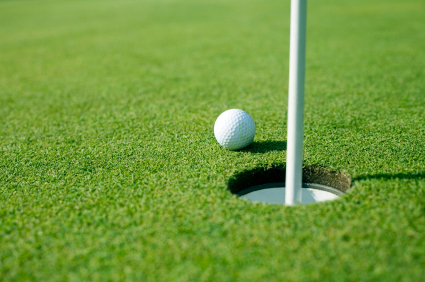Golfers recovering from spinal fusion surgery often wonder if they can return to the game we love so dearly. The good news? Yes, you can! Even elite athletes like Tiger Woods have returned to high-level golf following spinal fusion surgery. However, it’s crucial to prioritize your recovery and long-term spinal health with the right precautions.
Golf and Spinal Health
Golf involves dynamic movements that place stress on the spine, particularly during the twisting motions of a golf swing. Research shows that up to 63% of golfers experience back pain during their playing career. The repetitive rotational forces involved in the golf swing can exacerbate spinal issues.
Spinal fusion surgery can help stabilize the spine, but it often results in reduced spinal flexibility. This doesn’t mean you have to give up golf—it simply requires thoughtful adjustments to your technique and approach to avoid further injury.
Consider How Successful Your Spinal Fusion Was
Before resuming golf, it’s essential to assess the success of your spinal fusion surgery. Studies indicate that spinal fusion can improve symptoms of chronic back pain and spinal instability in 70% to 90% of patients. However, individual outcomes vary depending on factors like the extent of your spinal damage, the surgical technique used, and your adherence to post-operative rehabilitation.
Consider the following:
- Your ability to complete physical therapy without significant pain.
- Confirmation of successful fusion via imaging and clinical evaluation.
- Any loss of spinal range of motion as determined by your surgeon.
Consulting with your spine surgeon and physical therapist is key to developing a safe plan to return to golf.
Strengthen Your Spine for a Better Swing
Building strength and flexibility in your upper spine, neck, and surrounding muscles is crucial for a safe return to golf. Research highlights that post-surgery rehabilitation focusing on core stability can significantly reduce the risk of re-injury. Let your physical therapist know about your golf goals early in your recovery so they can tailor exercises to enhance the biomechanics required for the golf swing. Working with a Titleist Performance Institute (TPI) certified physical therapist is ideal because they understand the golf swing and can provide a plan to address you and your swing specifically.
Incorporate routines that improve:
- Neck and upper body mobility.
- Core stability for better swing control.
- Strength in key muscle groups supporting the spine.
When Can You Play Golf Again after Spinal Fusion?
The timeline for returning to golf varies based on the type of spinal fusion and individual recovery. Most patients achieve spinal stability and healing within 6 to 12 months post-surgery. However, some may begin light golfing activities as early as six months, provided they receive medical clearance. Always speak to your surgeon before considering returning to practice or play to ensure it is safe and appropriate.
Recovery is influenced by:
- The surgical procedure’s complexity.
- Your progress in physical therapy.
- Overall fitness levels and spinal health.
How to Swing a Golf Club after Spinal Fusion
Adapting your swing is essential to minimize strain on your back. Here are some tips to help you play golf safely:
- Shorten your swing: Limit rotational forces by focusing on controlled, compact swings.
- Refine your technique: Consider working with a TPI golf professional to optimize your swing mechanics. Go to www.mytpi.com and search for a professional near you.
How to Minimize the Risk of Re-Injuring Yourself
To protect your spine and avoid setbacks:
- Perform gentle warm-ups on the range before your round begins. This needs to be a routine staple before practice or play.
- Avoid over-rotating your torso during swings.
- Avoid uneven surfaces if walking or pushing a cart.
- Maintain proper posture and balance throughout your swing. Know your movement limits.
- Use a golf cart or caddy if available to minimize strain from excess spinal load.
- Steer clear of slippery conditions to reduce fall risk.
By following these precautions, you’ll lower the risk of re-injury and enjoy a safer return to the game.
When to Call Your Doctor Again
Mild discomfort is common when resuming physical activities post-surgery. However, consult your spine surgeon if you experience:
- Sudden, sharp pain during or after playing.
- Persistent discomfort that doesn’t subside with rest.
- New or worsening symptoms in the affected area.
Prompt medical evaluation can help address potential complications and keep you on track for recovery.
Can You Avoid Spinal Fusion in the First Place?
For many, spinal fusion surgery can be prevented with non-invasive options. Treatments like platelet-rich plasma (PRP) injections and physical therapy have shown promising results in managing spinal conditions. PRP therapy can promote healing of the structures of the spine that create painful or dysfunctional symptoms, providing a viable alternative to surgery in certain cases.
Swing the Club with Confidence
Spinal fusion doesn’t mean the end of your golf days. By prioritizing recovery, strengthening your body, and making adjustments to your game, you can safely return to the course. Remember, your spine is the backbone of your game—treat it with care, and you’ll be teeing off with confidence in no time!
Are you on your way to recovering from spinal fusion? Learn how Centeno-Schultz approaches physical therapy.
References
Centeno C, Markle J, Dodson E, Stemper I, Hyzy M, Williams C, Freeman M. The use of lumbar epidural injection of platelet lysate for treatment of radicular pain. J Exp Orthop. 2017 Nov 25;4(1):38. doi: 10.1186/s40634-017-0113-5. PMID: 29177632; PMCID: PMC5701904.
Shifflett GD, Hellman MD, Louie PK, Mikhail C, Park KU, Phillips FM. Return to Golf After Lumbar Fusion. Sports Health. 2017 May/Jun;9(3):280-284. doi: 10.1177/1941738116680200. Epub 2016 Nov 1. PMID: 27879299; PMCID: PMC5435149.
